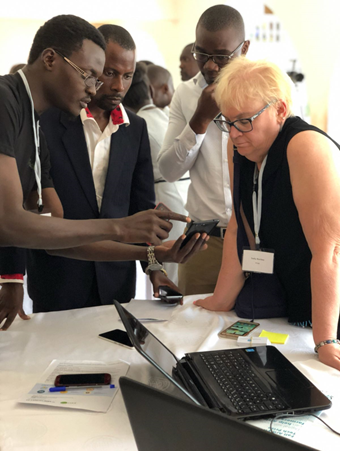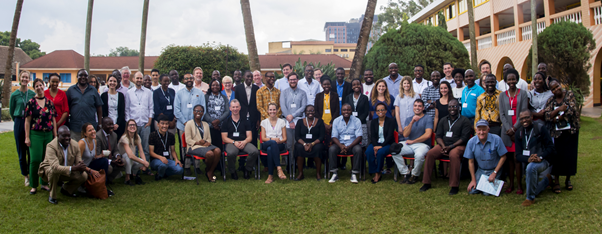
“Take it to the Farmer”: Behind the Scenes of the Fall Armyworm Tech Prize Co-Creation
Co-creation, along with human-centered design and lean startup, are innovative approaches that have risen to prominence in the development lexicon over the past five years. Some of us (myself included) have used “co-creation” without fully understanding what it means, simply assuming it is an event that brings various partners together to brainstorm ideas to solve a problem. Only when I attended the Fall Armyworm Tech Prize co-creation workshop from June 26 to 29, 2018 in Kampala, Uganda, did I fully grasp the nuances of co-creation, and realize the significant benefits it holds for end users of the co-created products.
Seeking Innovators
Fall armyworm is a devastating pest that has the potential to destroy millions of tons of crop yield across Africa, drastically reducing smallholder farmers’ incomes. In response, Feed the Future and its partners, Land O’Lakes International Development and the Foundation for Food and Agriculture Research (FFAR), created the Fall Armyworm Tech Prize competition to source digital tools and approaches that provide timely, context-specific information that enable smallholder farmers and those who support them to identify, treat, and track incidence of fall armyworm.
Twenty finalists, out of 228 applicants, were selected to attend a co-creation workshop and participate in a range of interactive sessions to give them early feedback on their prototypes and further develop them for the next phase of the competition. In addition to the innovator finalists, the workshop brought together private sector and government partners, agricultural, technology, and business development experts and mentors, and most importantly, the future users of their solutions: the farmers.
Collaboration, Not Competition
My rudimentary understanding of co-creation within the prize process wrongfully pushed me to assume that although co-creation encourages collaboration, at its core, this prize is a competition. Five prizes totaling $400,000 are on the line and thus, the idea of co-creating could only be taken so far. I was very wrong.
The co-creation process creates an environment that unites competitors. The three-and-a-half days were filled with sessions focused on unpacking the problem of fall armyworm, incorporating human-centered design in prototype development, business planning (including fundraising, costing models, and communications), measuring impact, and delivering pitches to different audiences. All of these sessions helped the finalists understand how to improve their solutions, but what happened behind the scenes was where the spirit of co-creation really took flight. It seemed that the competition element of the prize was forgotten, replaced by a strong focus on collaboration to solve this endemic problem. Whether it was a coffee break where a partner made a recommendation on which data analytics tool to integrate into their solution, or a lunch where two finalist groups decided to join forces, the heart of the co-creation happened when I least expected it.
A few of my favorite examples of the spirit of co-creation:
- Several finalists proposed digital tools that use machine learning to help farmers and extension workers identify the pest. Early on, they realized that there was a dearth of images of fall armyworm. In response, those innovators met over dinner to brainstorm how to create an image bank to train their classification models. Whether or not these finalists win, this effort will prove extremely beneficial to the fight against fall armyworm.
- On the second day there was a Marketplace, similar to an exhibition, where innovators pitched their ideas to partners, potential investors, and farmers. Many finalists used this opportunity to have farmers test their digital tools and solicit feedback on how to make them more user friendly and helpful, given their technological constraints. This farmer interaction was continual throughout the workshop, allowing participants to further understand the needs of farmers as they built and iterated on their tools.
- Finally, on the last day, one of the innovators collected the phone numbers of all the other finalists and created a WhatsApp group for them to bounce ideas off one another and share approaches during the remainder of the prize process.
Together these examples embody the key to a successful co-creation: Give people the space and time to go beyond the program’s structure and work together in their own way to achieve a common goal. As we move toward the next phase of the prize process, I look forward to seeing how the solutions are fueled by this collaboration and farmer engagement.
In her closing remarks at the co-creation workshop, Executive Director of FFAR, Dr. Sally Rockey (pictured above), rightly quoted Dr. Norman Borlaug’s last words: “Take it to the farmer.” This sentiment illustrated the outcome of this workshop as competitors looked past the prize to focus on helping farmers across Africa manage this pest.

Photo credit: DAI (above), Addmaya (below)
By: Talia Dweck, ICT Specialist, DAI Center for Digital Acceleration